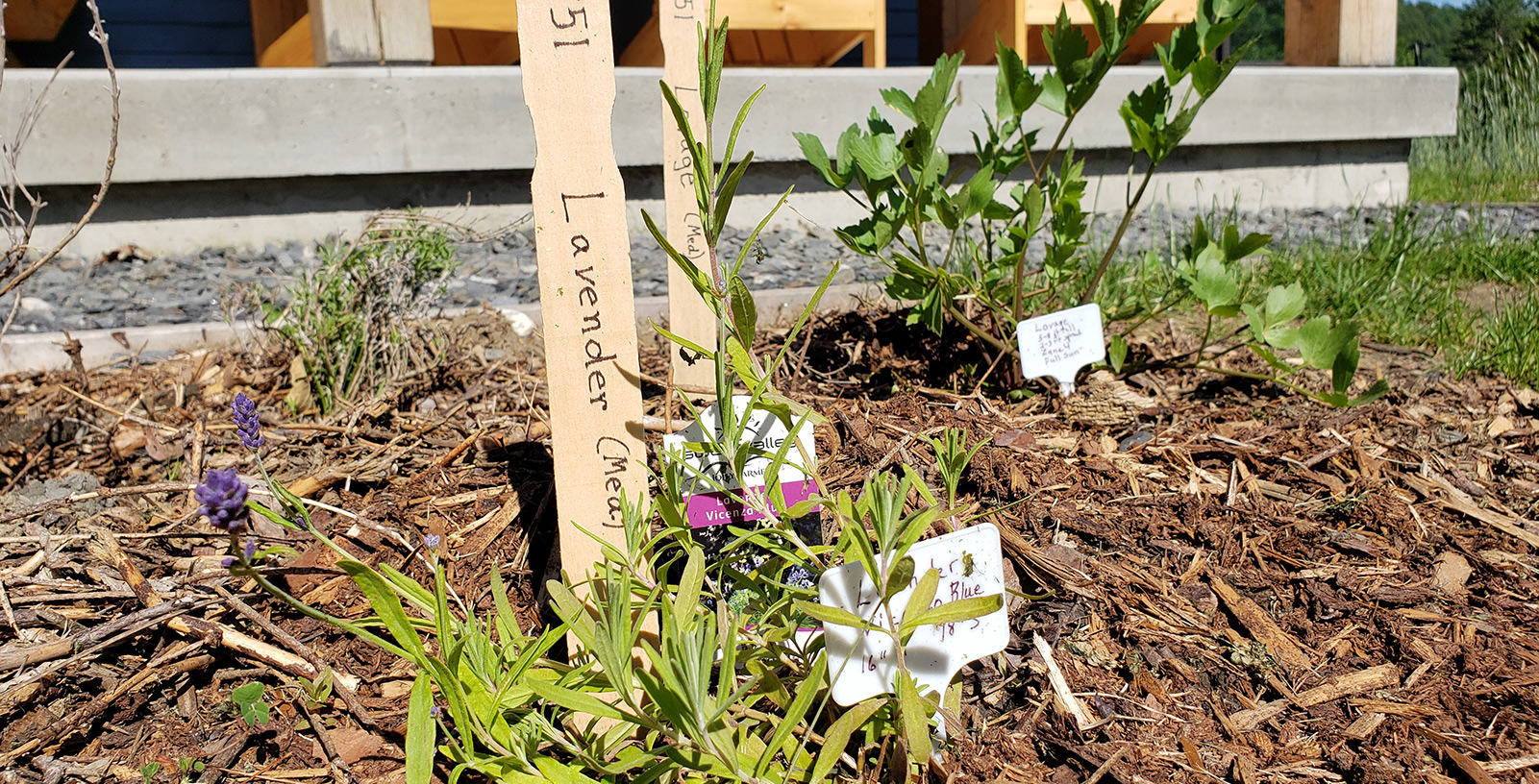The Herb Garden at NBNC

By Claire Gilbertson, VT Master Gardener
Following a suggestion from Chip Darmstadt, director of the North Branch Nature Center, the Master Gardeners developed an herb garden for the pollinators this year
We followed the 1851 “Catalogue of Medicinal Plants, Barks, Roots, Seeds, Flowers and Select Powders….” published by the United Society of Shakers, New Lebanon, New York. This catalog listed over 300 medicinal herbs, their common name, price, botanical names and properties or what the herb could be used for. Our goal was to use this 1851 catalog for suggestions on what herbs could have been grown by a farm family living in the 1840 Nature Center house, in the 1850s. http://collections.nlm.nih.gov/ext/mhl/101250104/PDF/101250105.PDF
The Shakers’ herb business was incredibly successful, well-known and respected for the sale of their herbs and seeds. Their catalog was sent all over the United States and the world, so, this catalog found online seemed to fit our goal.
Many of the herbs in the catalog were carried by the immigrants when they came to the United States from their home country. They brought the herbs and seeds or roots used in their native dishes and those thought to cure sickness and to keep one healthy. Many of the herbs were traditional European herbs. Some of the herbs listed in the catalog came from Native American healers.
An article by Rita Buchanan in Mother Earth Living says, “Shaker cooks, however, made little use of culinary herbs, relying on salt and pepper for seasoning main dishes and cinnamon, cloves, ginger and other imported spices for desserts. The few herbs they did use were thyme in soups and stuffings, sweet marjoram in turkeys, summer savory in turkey, sausage, beef and pork, sage in cheese and parsley in soups and as a garnish.” A peek into history: Shaker Herbs. https://www.motherearthliving.com/health-and-wellness/shaker-herbs
Taking a cue from this article and found in the 1851 catalog we planted these 5 familiar, culinary herbs: parsley (Apium petroselinum), marjoram, sweet (Marjorana hortensis), sage (Salvia officinalis), summer savory (Satureja hertensis) and thyme (Thymus serpyllum).
The medicinal herbs we planted were also suggested by the 1851 catalog: catmint (Nepeta), lovage (Ligusticum levisticum), rosemary (Rosmarinus officinalis), yarrow (Achillea millefolium), dill (Anethum graveolens), and lavender (Lavendula spica).
If you check-out the pollinators’ herb garden you will see tall stakes next to each plant that read 1851 across the top, and the herb’s common name underneath. So, it’s easy to spot the herbs from the list of the 1851 Shaker catalog.
Right now, mid-June, the plants are small, but soon some will be 3 to 5 feet tall. They just need sun.

